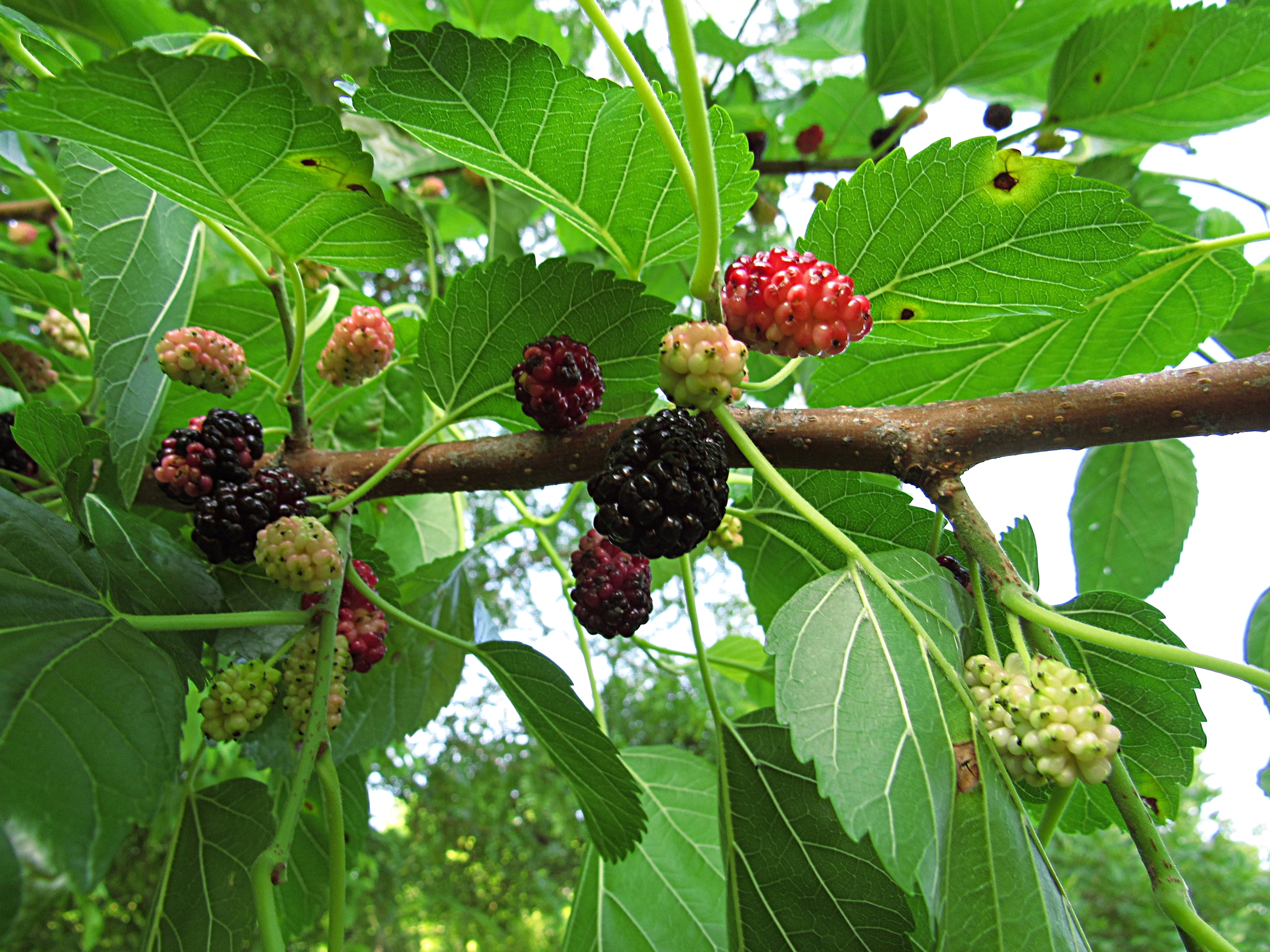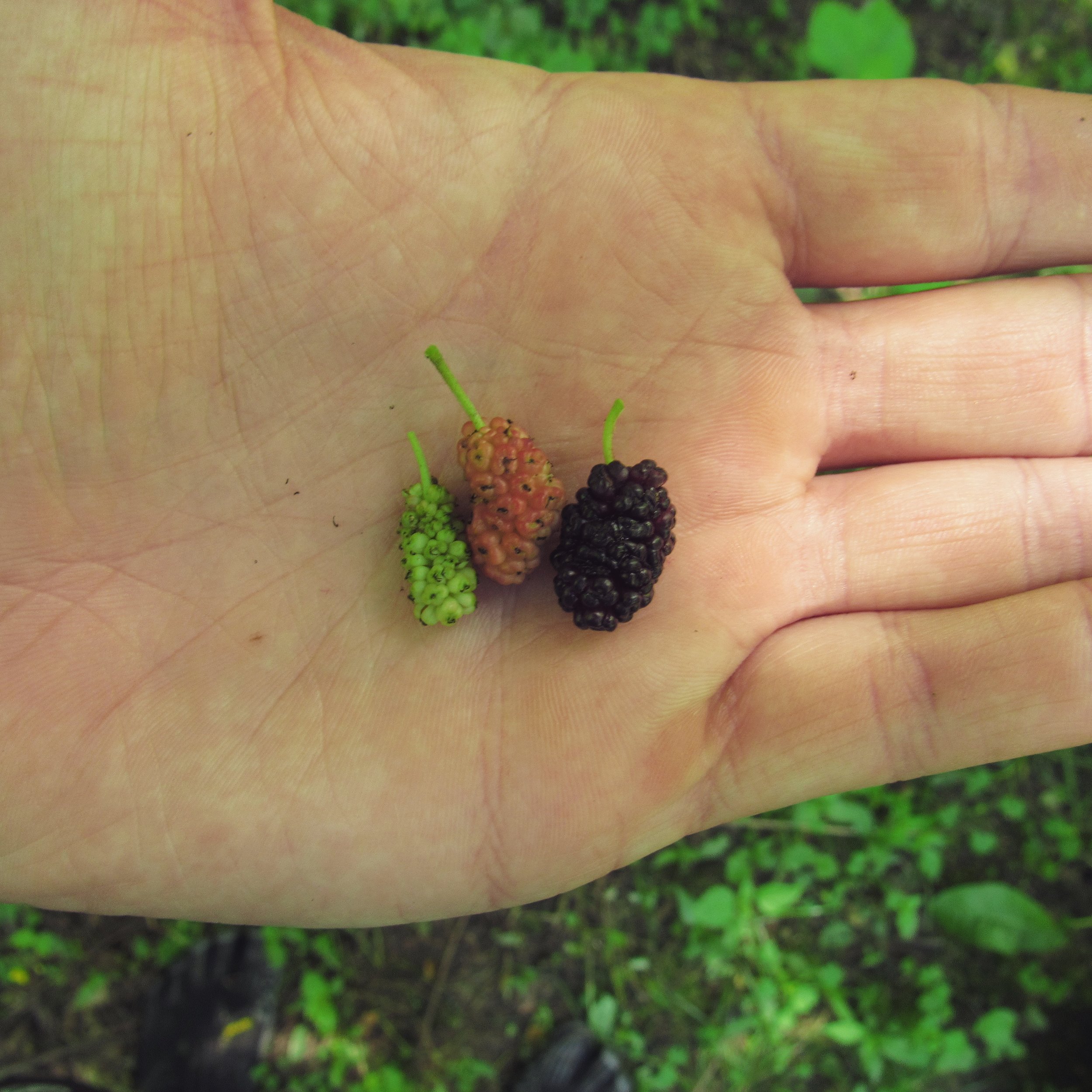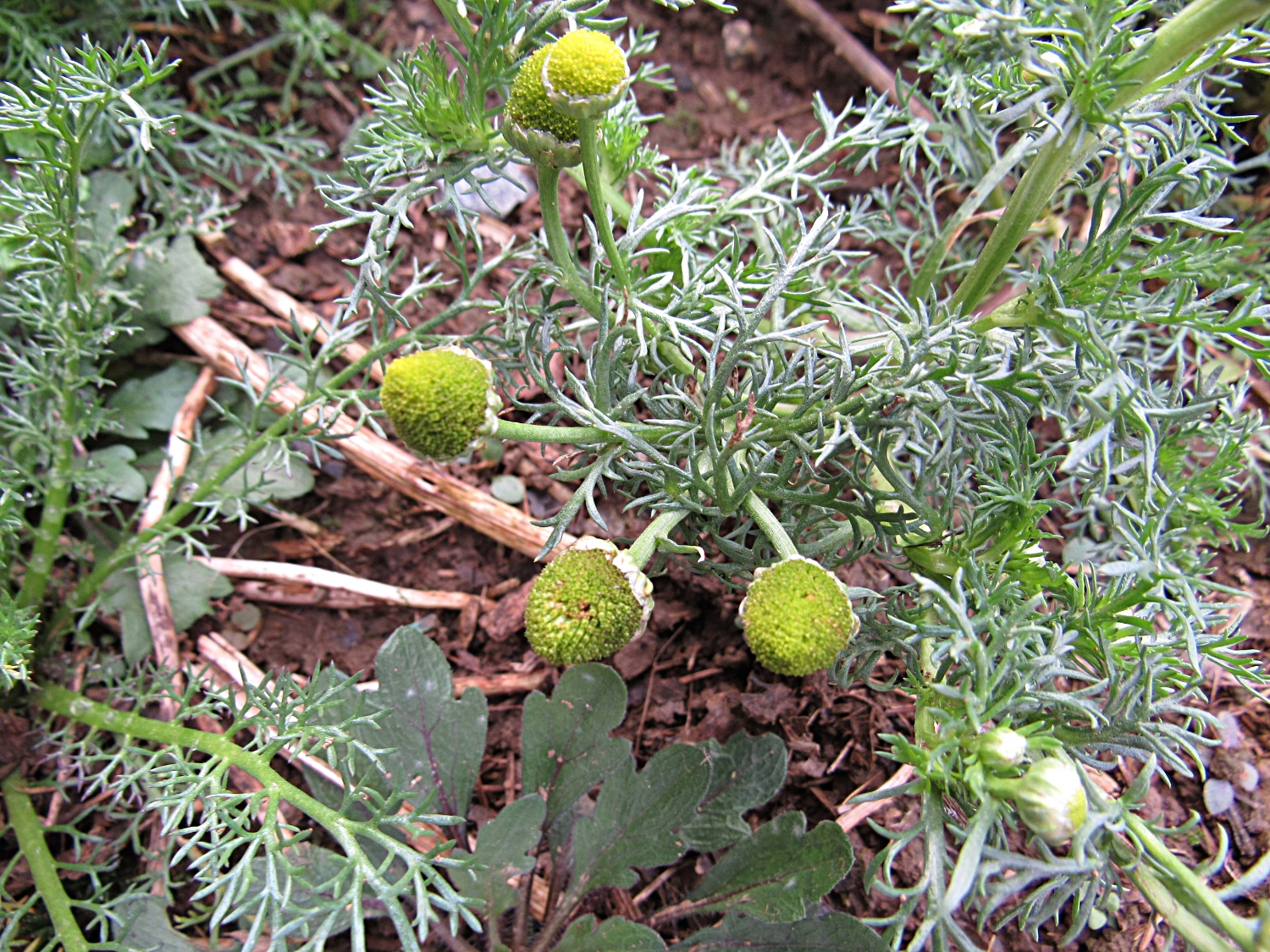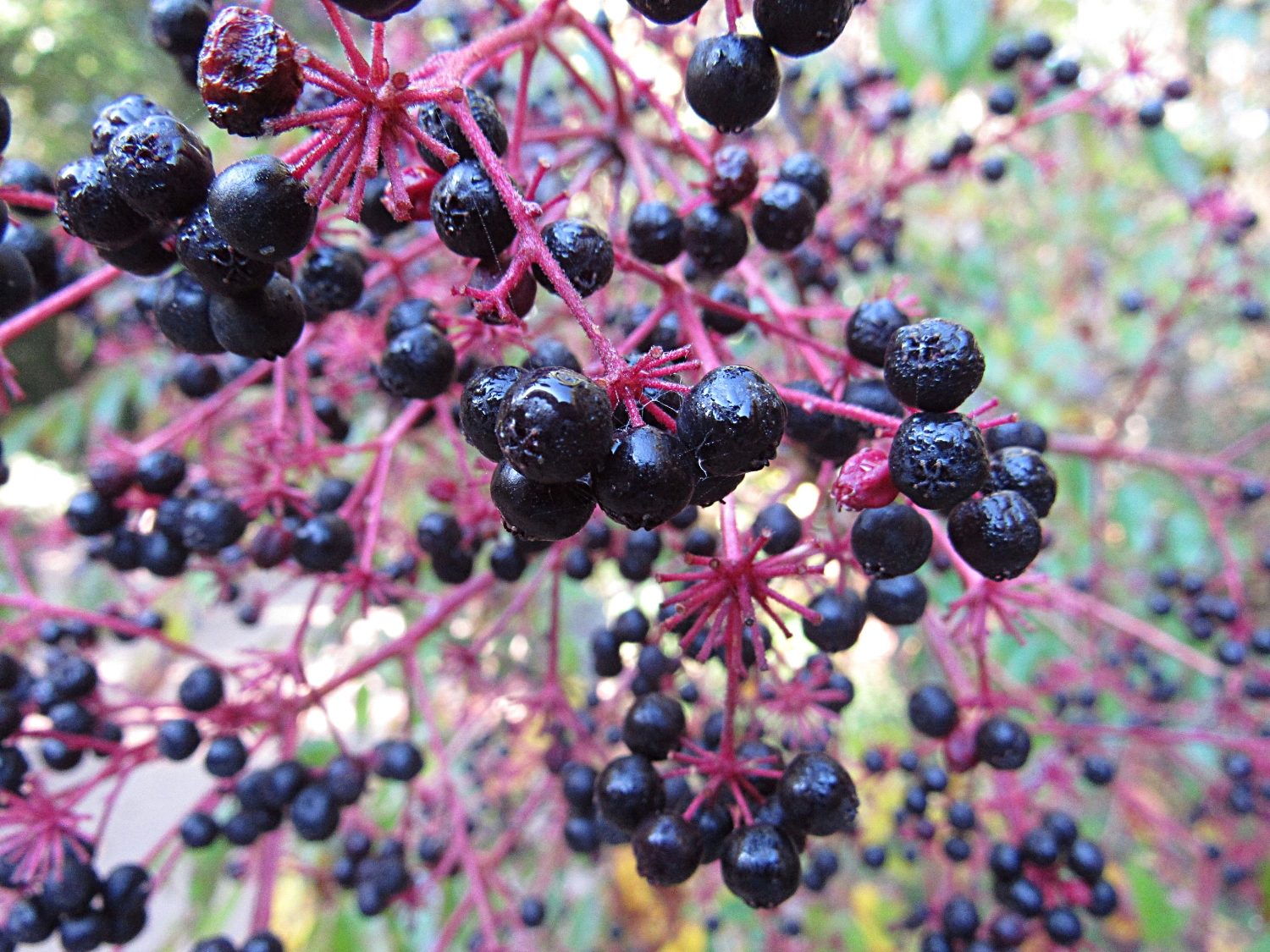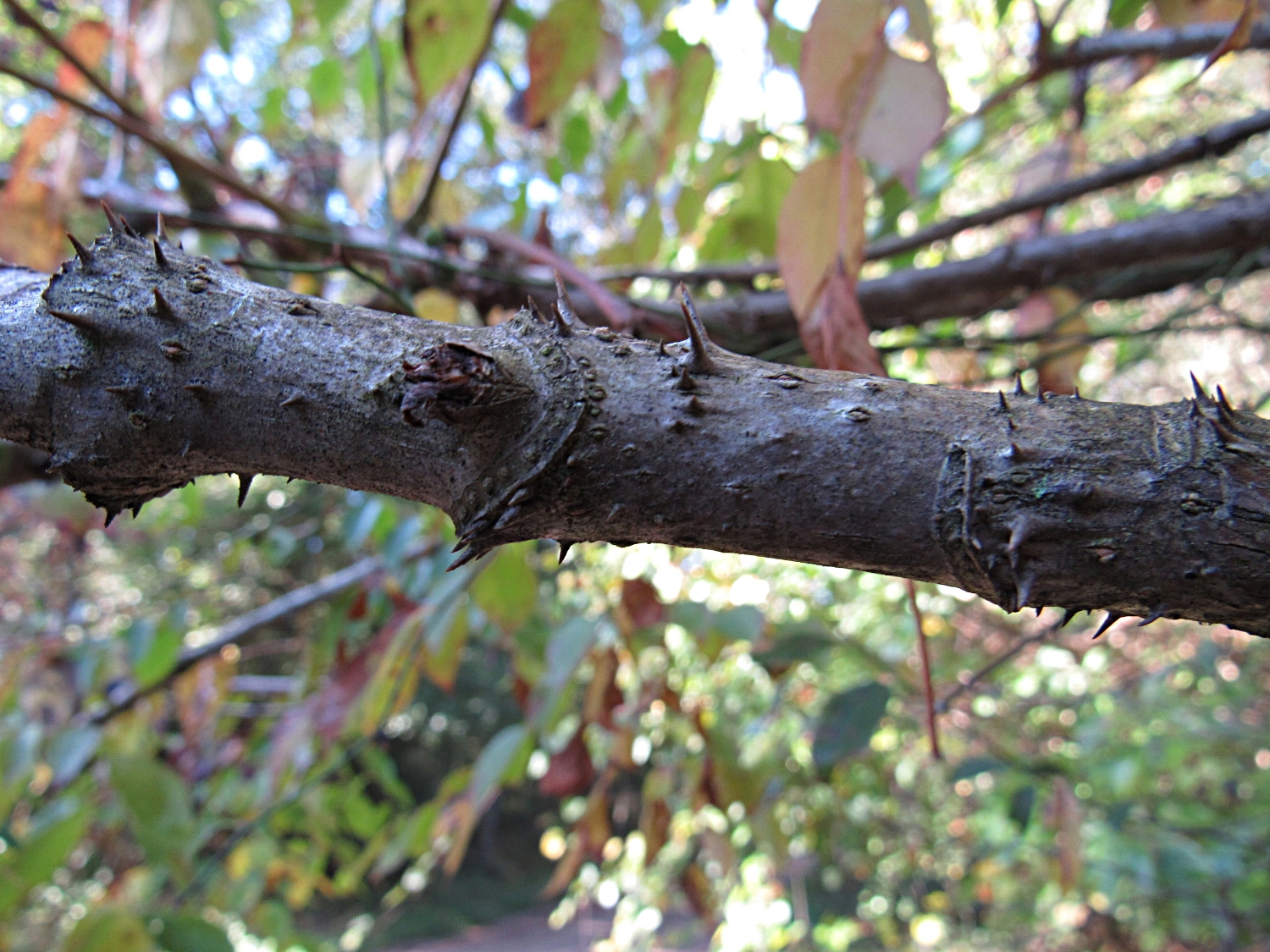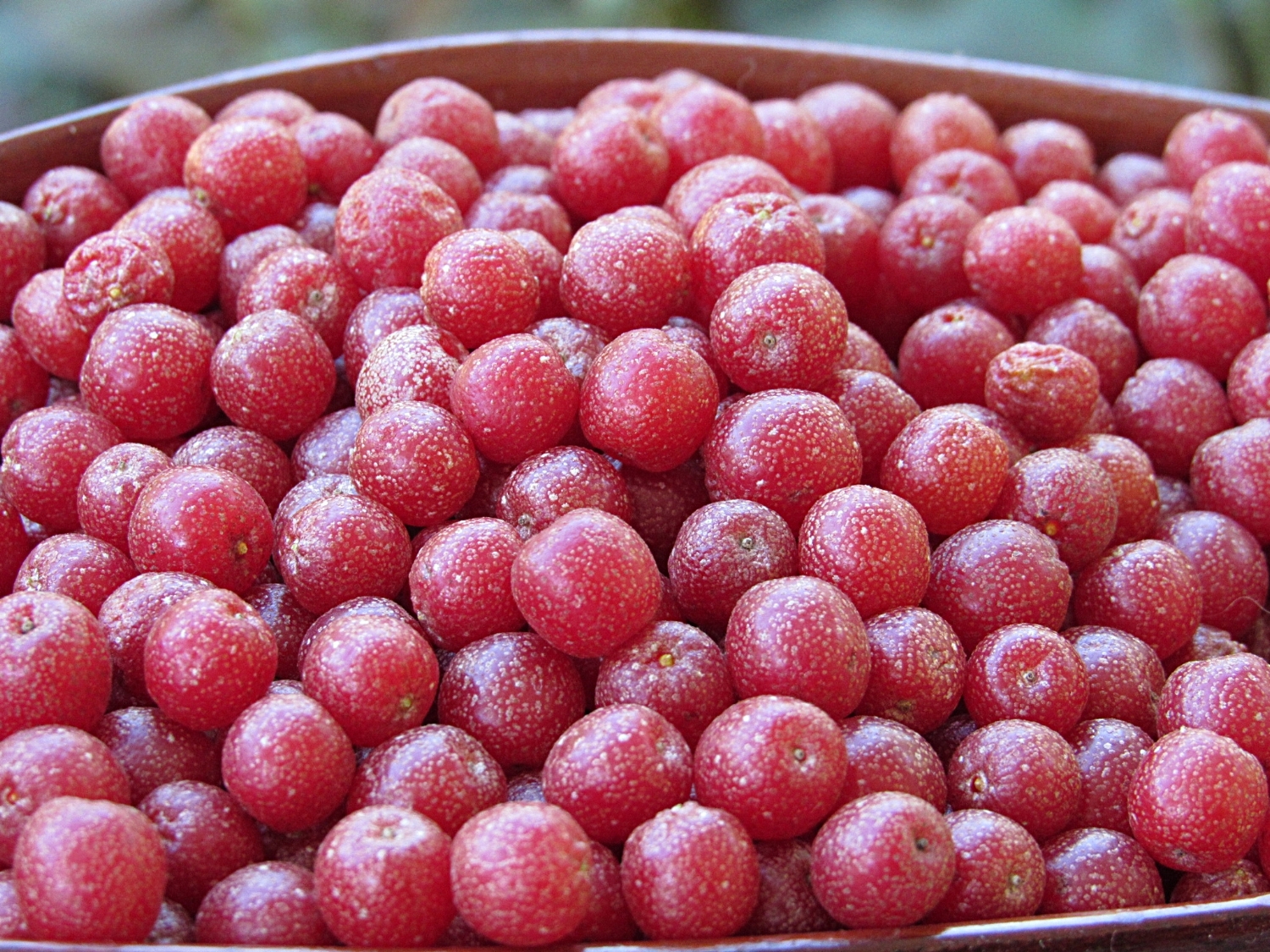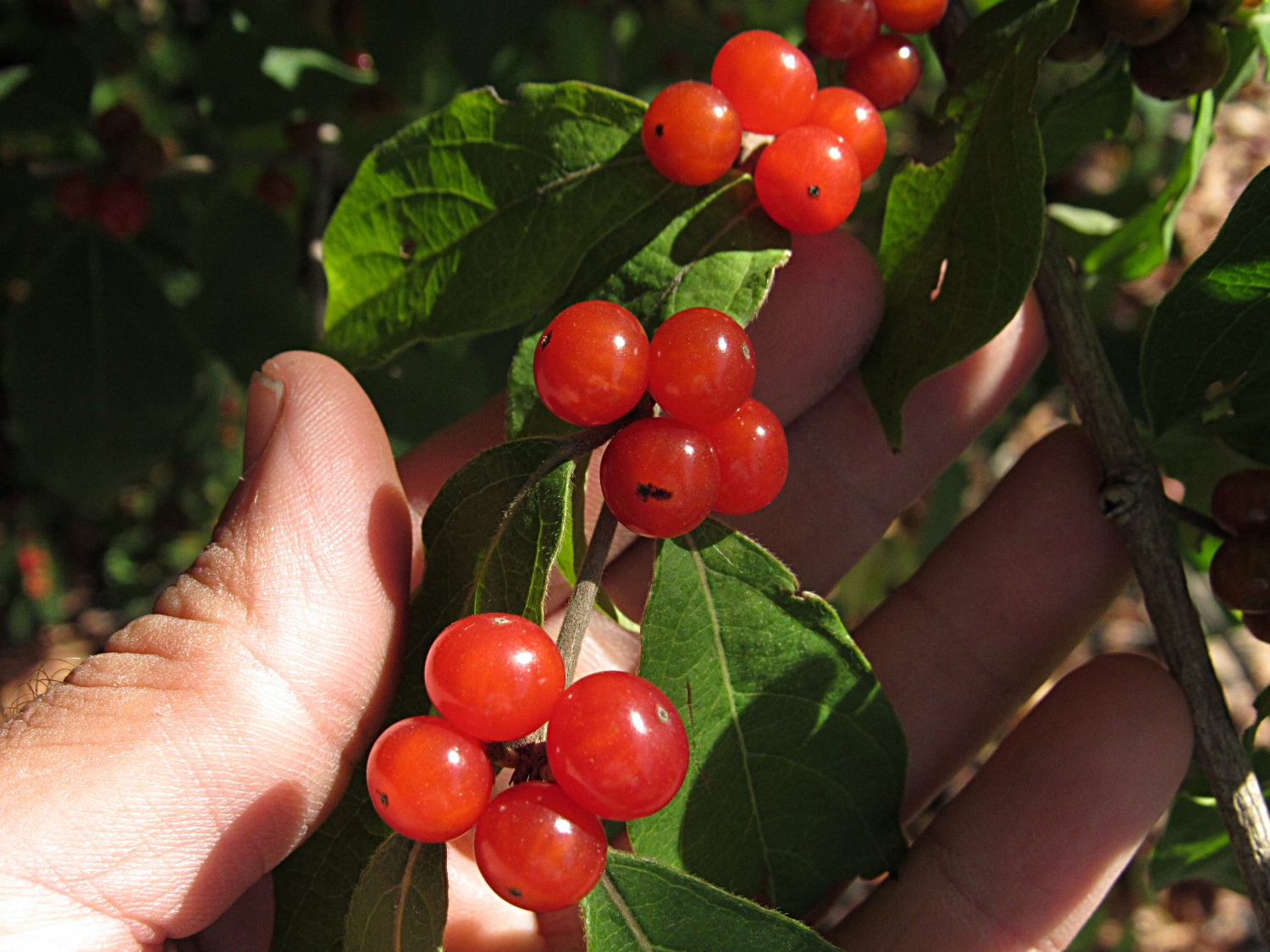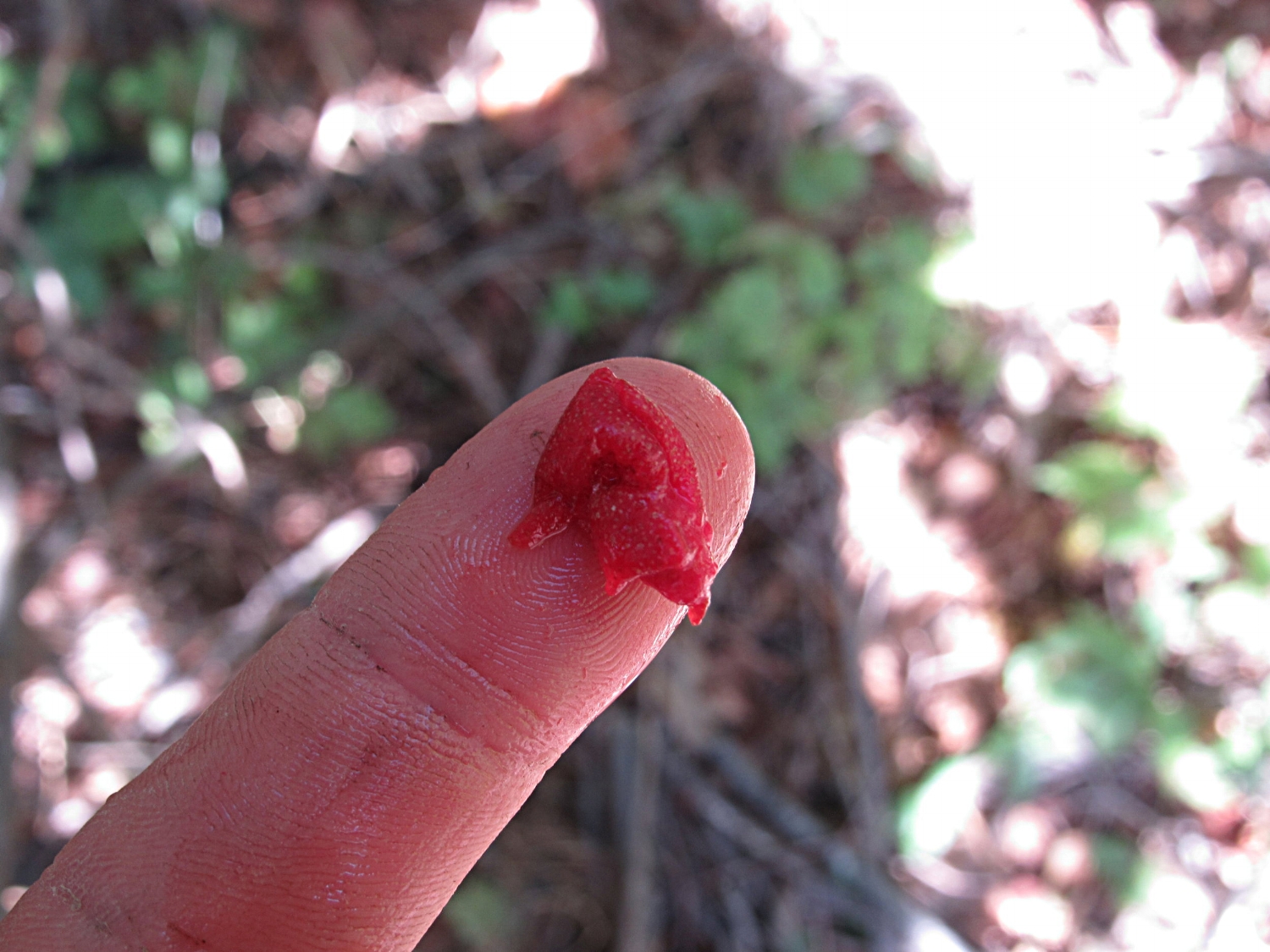Many of you reading this have bought dried mulberries before - probably the white variety, imported from Turkey or nearby environs. But for most Americans, we're surrounded by mulberries: both white and red. If you live in the Northeast, you can almost certainly find much fresher, juicier, organic mulberries within a few miles of your house. Mulberries grow on small-to-medium sized trees, especially on the edges of fields or near water.
Thankfully, mulberries as a species are easy to identify. If it looks like a blackberry and is growing on a tree, it's a mulberry. Obviously exercise caution and consult multiple guides, but there are no toxic lookalikes for mulberries.
You'll probably find two varieties: the invasive white mulberry (Morus alba), introduced from the East, and the native red mulberry (Morus rubra). There are other strains in the States, but most mulberries you find are going to be white or red.
Morus rubra in various stages of ripeness.
This is about the only part of mulberry foraging that can get confusing: red mulberries start out green, then turn white, then pinkish, then red, then very dark purple.
Here you can see three distinct phases of red mulberry ripeness.
White mulberries, on the other hand, start out green, then turn white; that's it. If they keep ripening, they sometimes turn a creamier off-white, sometimes even with a tinge of purple-pink flecked through the fruit - as you can see in the photo below. You can tell white mulberries and red mulberries apart by the leaves, but in my opinion it's easier to just look at the fruit. If it's green, don't eat it (unless you want violent puking and hallucinations). If it's white and hard, don't eat it - a hard mulberry is an unripe mulberry. If the fruit is white and soft, and there are no purple or red berries on the same tree, give it a nibble to confirm that you've found a ripe white mulberry.
A fully-ripe white mulberry
In my opinion, white mulberries aren't worth gathering if red mulberries are around - whites just don't have the same sweet flavor. I know they sell the white at the store, but if you try both berries fresh, you'll see where I'm coming from.
100 grams of fresh mulberries give you about 9 grams of sugar, 2 grams of fiber, and 43 calories. It's hard to find reliable nutritional information about red mulberries. I would guess that they've got some antioxidants in there, but I just eat them for the joy of it - mulberry pie is too delicious for me to get hung up on nutritional value.
My favorite way to eat mulberries is to freeze them and blend them with just enough tart cherry or pomegranate juice to make something like a thick sorbet. Top it with fruit and nuts, and you've got something that tastes pretty damn close to an expensive acai bowl.
Just look at that beauty.
You'll notice that in the photos of me holding mulberries, the stems are still attached. You can't really remove the stem from a mulberry - it runs deep into the fruit. Sometimes people get a little weird about not wanting to eat the stem and try to pull it off, at which point the mulberry usually just squishes into purple pulp between their fingers. So do yourself a favor and just eat the whole thing, stem and all: I promise it won't be gross.
There's not a whole lot to say about mulberries. They taste good, they're easy to identify, and they're everywhere. If you live in the Northeast, mulberries are just one more way to add some wild back into your life.
